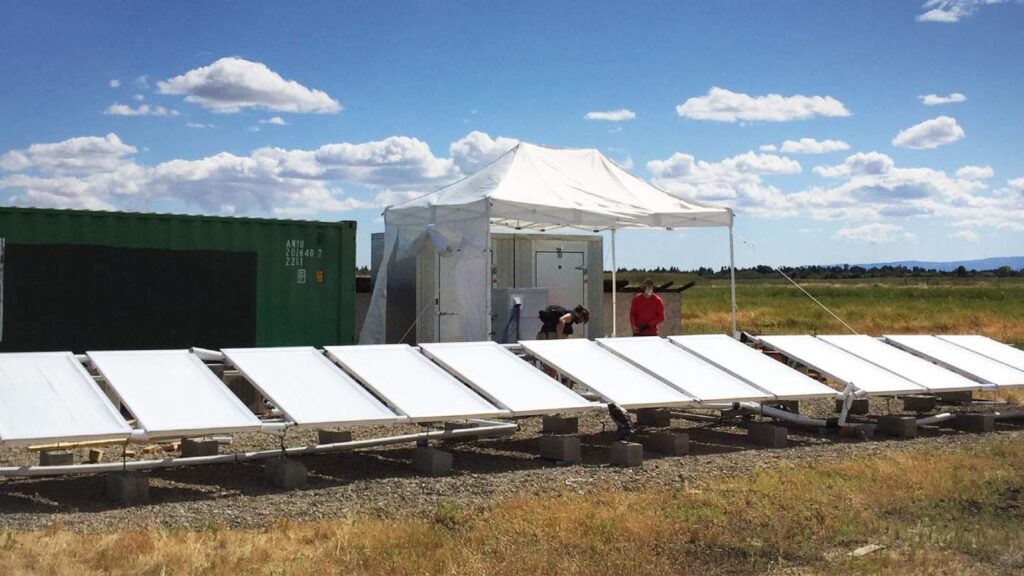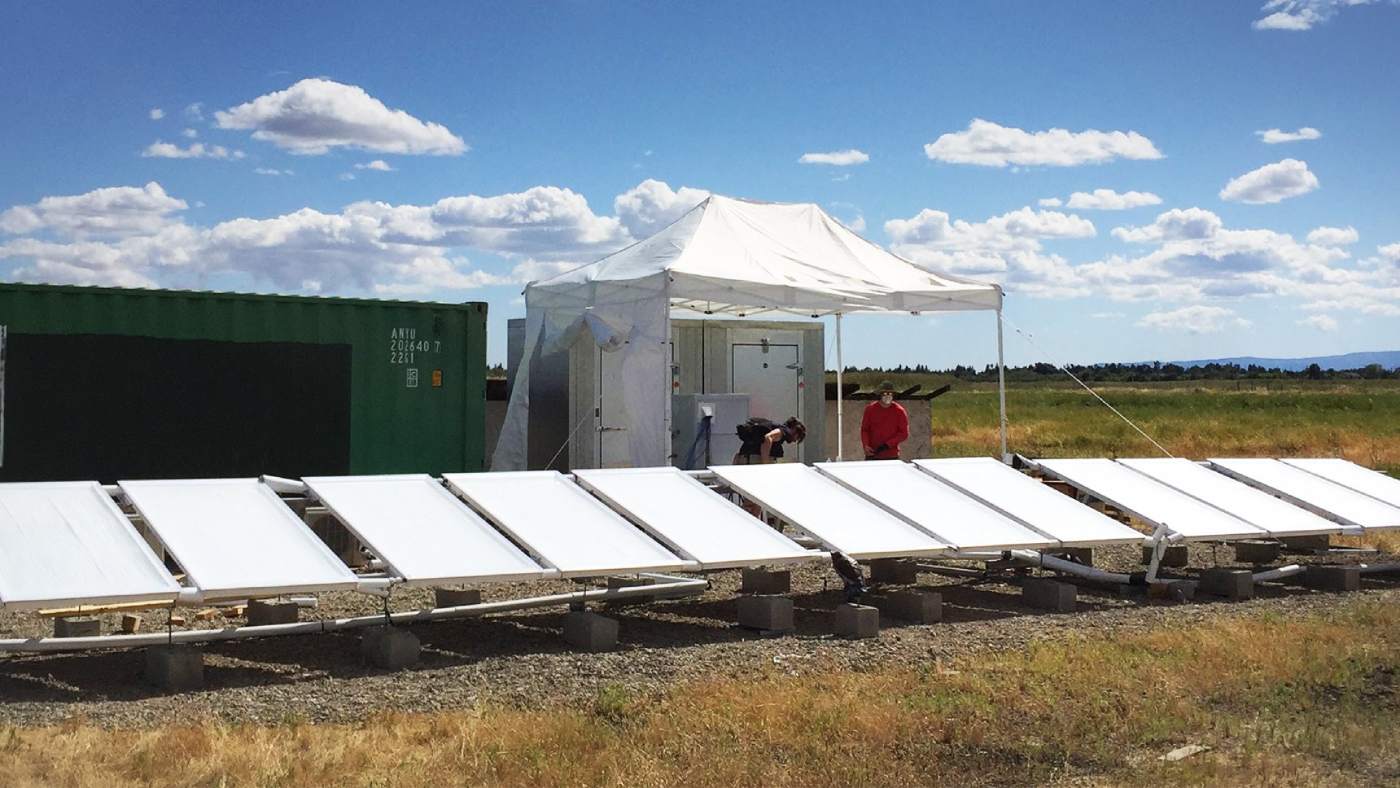
If in mid-summer you went onto the top of the Grocery Outlet supermarket in Stockton, California, and placed your hand on the strange, glossy black panels you found there, you’d be shocked to find they were as cold to the touch as a basement fuse box.
Installed by a company called SkyCool Systems, they are the first of a new breed of cooling technologies that radiate heat out through the atmosphere, lowering nearby air temperatures by about 10°F.
Radiative cooling is what happens when the electromagnetic waves we call heat leave an object. It’s the phenomenon that puts you at risk for heat stroke in the desert during the day, and hypothermia at night; the absorbed heat evacuates the landscape at sundown, and without any moisture to trap it, leaves through Earth’s atmosphere into outer space.
A UCLA scientist reasoned that if a certain spectrum of warming rays is radiated out to the atmosphere during the day, it would cool whatever it left, potentially offering an alternative to traditional air conditioning.
An estimated 7% of global greenhouse gas emissions are generated through cooling systems, both for homes and transport, but as global temperatures continue to climb, the use of cooling systems for homes and businesses is expected to triple over the coming years.
SkyCool’s radiative panels can absorb all the heat-producing light from the sun, and rather than sending it back into the swirling cauldron of gasses that are heating the planet, expels it out into space.
Counter intuitive
Aaswath Raman, a materials scientists at the University of California LA, discovered that radiative cooling technologies like panels and special reflective paints had been investigated before but then abandoned as impossible.
The idea was that if something could radiate heat even in broad daylight, it could save thousands in refrigeration costs. Raman decided to submit a funding proposal to the Advanced Research Projects Agency-Energy, or ARPA-E, a branch of the Department of Energy.
Despite the quilt of material and all the water vapor and CO2 that make up the atmosphere, infrared radiation between 8 to 13 micrometers in length passes through it as if it weren’t there, so Raman aimed to creative a film that reflected visible light, and which radiated the infrared light which can leave the atmosphere, ensuring the heat he disperses doesn’t become someone else’s problem.
With colleagues from the Stanford engineering department led by Shanhui Fan, he created an ultra-thin film, which he says could be produced in rolls a meter long by two-meters wide, made of silica, glass, and hafnium dioxide, a coating agent used in the optics industry.
Placed on a rooftop, they found their prototype panel became warmer when shaded from the sun’s rays—a counter-intuitive reaction to what one would expect, because the radiation was impeded by the material generating the shade. Furthermore, under the blazing summer sun, the panel was cool to the touch.
Applications abound
If placed on the hood of a car, the film would not only reflect any light from the sun, but radiate away some of the heat from the engine; if placed above where water pipes run through a building, it would cool the water therein, reducing the load on air-conditioning systems.
RELATED: Rooftop Panels of Tiny Plants Can Cleanse Polluted Air at 100 Times the Rate of a Single Tree
After a trip to Mumbai in India revealed the speed at which the home A/C market is growing, Raman needed to ensure the panels and film would be cheap enough to be employed in developing countries near the tropics, where they’re needed most.
In Stockton, the Grocery Outlet supermarket spent $40,000 on refrigeration per year between their freezer isles and the deli. SkyCool panels placed on the roof and is now saving about $5,800 in costs per year.
Washington Post reports that Raman and SkyCool Systems have gone in search of grant money to replace all the air conditioners in a school as part of a project to see if their special film can itself be the principle cooling agent of a building, while National Geographic adds that some scientists have created models that suggested if only 1.5% of the world were covered in these panels, and that they could be maintained over a long enough period, it would reflect all the additional heat created by the climate crisis.
REFRESH Friends’ Feeds With Some Positive News by Sharing This Story…




















